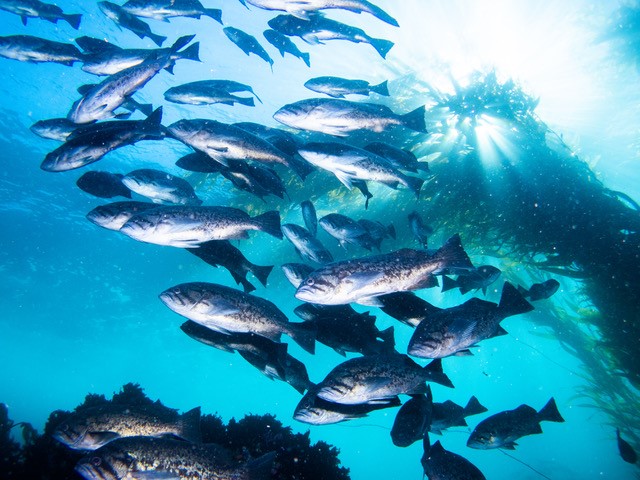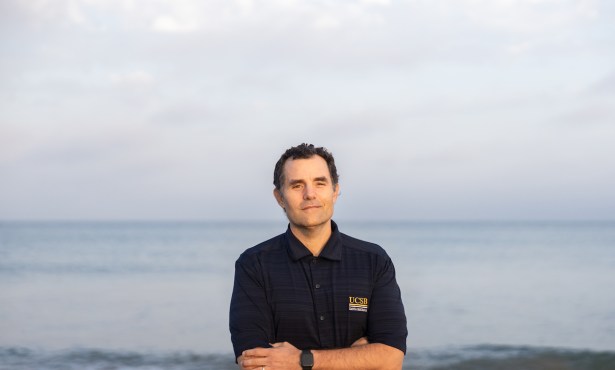Nearly No Poaching in Channel Islands Marine Protected Areas
Long-Term Study Proves Efficacy of Once-Controversial Conservation Measure

The first deep-dive analysis of how well the network of marine protected areas (MPAs) ringing the Channel Islands guards against poaching has delivered decisively positive results. Illegal takings within the boundaries of the MPAs, established in 2003 after a series of long and bruising negotiations between fisherman, conservationists, and scientists, are essentially zero, the study spearheaded by Oregon State University found. It also discovered much higher rates of legal fishing at unprotected sites nearby.
Researchers estimated the population size and poaching frequency of four fish species ― blue rockfish, kelp rockfish, California sheephead, and kelp bass ― based on the numbers of larger, older fish present; fewer big fish is an indication of higher harvesting rates. They utilized data collected since 1999 by the Partnership for Interdisciplinary Studies of Coastal Oceans, or PISCO, which conducts long-term visual surveys of West Coast kelp forests.
Get the top stories in your inbox by signing up for our daily newsletter, Indy Today.
UCSB biologist Jenn Caselle is the principal investigator for PISCO. She said she was encouraged, though not necessarily surprised, by the results of the Oregon study, which were published last week in the science journal Conservation Letters. “We know that in addition to being well-monitored, our MPAs are also well-enforced,” said Caselle.
Perhaps more critically, Caselle explained, Central Coast fishermen tend to follow the rules, even if they don’t necessarily agree with them. “Our locals respect the MPAs and don’t break the law,” she said. Other jurisdictions aren’t as lucky, she noted. The lengthy public input process ahead of implementation also likely played a part, Caselle went on. “Community buy-in leads to high compliance,” she said.
The study did make note of two areas where poaching may have taken place of kelp rockfish off San Miguel Island and blue rockfish near Santa Cruz Island. But it’s very possible those schools could have simply strayed outside the protected boundaries and been missed in some of the counts, Caselle said.
Every day, the staff of the Santa Barbara Independent works hard to sort out truth from rumor and keep you informed of what’s happening across the entire Santa Barbara community. Now there’s a way to directly enable these efforts. Support the Independent by making a direct contribution or with a subscription to Indy+.



